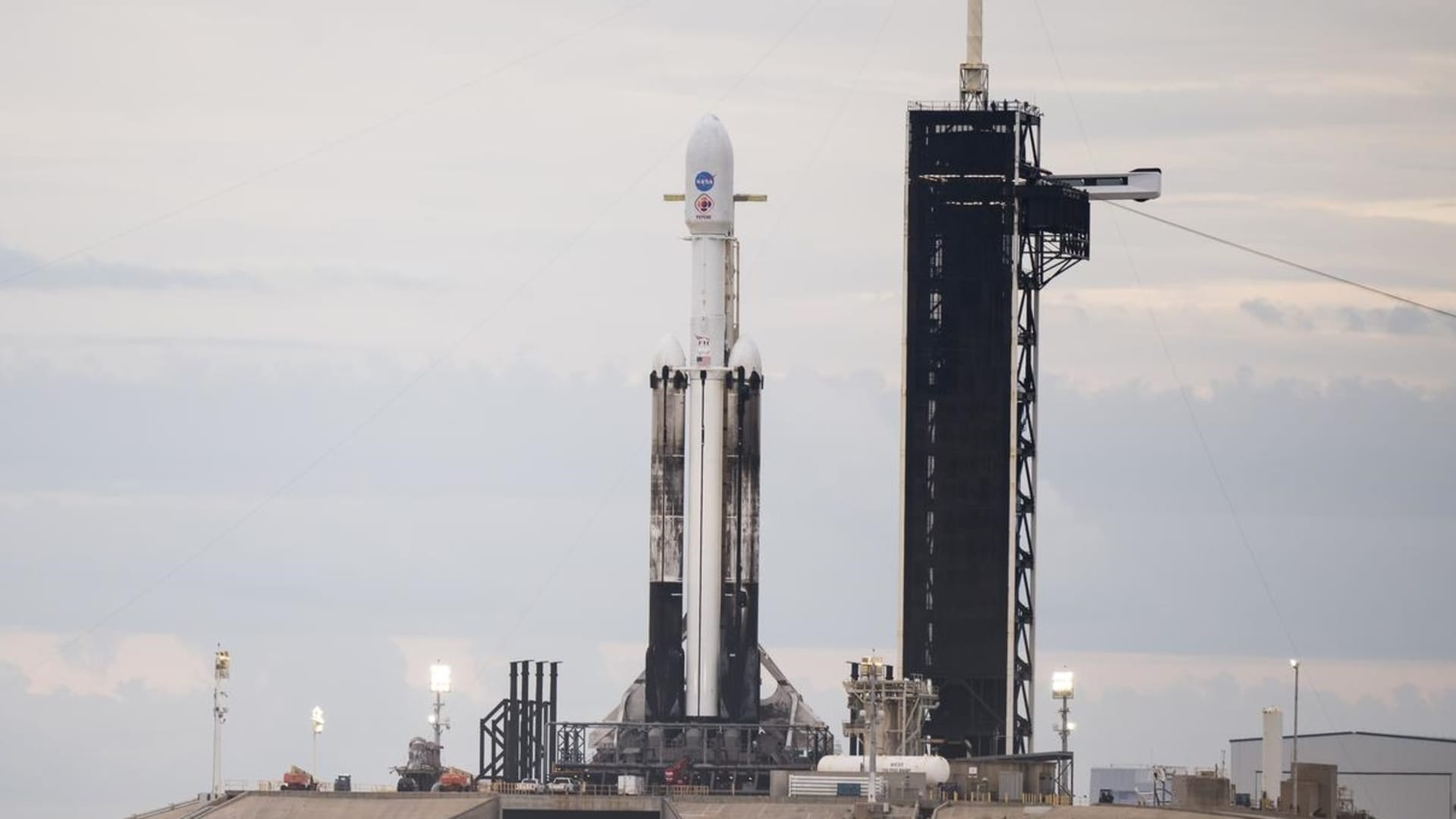[The livestream is slated to begin at 9:30 a.m. ET. Please refresh the page if you do not see the video player above.]
SpaceX’s powerful Falcon Heavy rocket is set to launch on Friday morning, flying a NASA mission bound for a distant asteroid.
Targeting the asteroid Psyche, the eponymous NASA mission aims to fly a spacecraft – about the width of a tennis court – on a journey of almost six years and about 2.2 billion miles, arriving at the planetary body in July 2029.
The launch is scheduled for liftoff at 10:19 a.m. ET from NASA’s Kennedy Space Center in Florida. If postponed for weather or technical reasons, SpaceX has backup launch opportunities in the coming days.
NASA wants to study the composition of the asteroid, which the agency describes as “an unusual object likely rich in metal.” The Psyche spacecraft is armed with a variety of scientific tools, such as instruments for studying the asteroid’s magnetic field and chemical make up.
The agency expects to spend about $1.2 billion on the Psyche mission, including the costs of development and operations. Of that total cost, NASA awarded SpaceX a contract of about $131 million to launch the mission.
The mission is SpaceX’s eighth launch of its Falcon Heavy rocket. The company plans to land and recover the rocket’s pair of side boosters, but the central core of the rocket will be expended.
